Paint Defects and Paint Correction – Part 1: Swirls and Scratches
by Rodney TatumRodney Tatum of Mirror Reflections Auto Spa shares what exactly imperfections are, how to remove them and how to prevent them in this 4 part article series. Click here to read them all!
What is paint correction and how does it improve the appearance of your vehicle?
If you are a Professional Detailer you often have had a potential client say “my car is missing that pop”. But when you bring up what is visually obvious to your trained eye, the person responds by saying “it does not have any swirls! I don’t see what you are talking about! What is this paint correction talk! It just needs a good wax!”
If you are a potential client discussing the needs of your car with a Professional Detailer, you may have thought to yourself “what is with this crazy paint correction talk! He must be trying to con me out of my money. Sure my paint looks dull, but I don’t see what he is talking about.”
What you do not see is making your paint look dull.
What is wax and what is polish? Wax is for paint protection. Polish is a product consisting of liquid abrasives designed to level and consequentially clean your paint in order to improve its appearance. Many people mistakenly believe a wax is performing the way a polish would.
One of the reasons that this misconception is perpetuated throughout the mainstream public is that most waxes sold over the counter are cleaner waxes. In other words, many over the counter products are all in one type products. So upon application, the paint cleaners in the product are cleaning up the road grime and performing some of the duties a clay bar would perform. These products were made knowing the average consumer is not going to be as meticulous as a professional or enthusiast. In addition, some of these over the counter products also have built-in glazes that can fill in some of your paint’s defects temporarily. Wax itself will slightly fill. The clarity this brings will dissipate as the wax degrades. With a cleaner surface and a very temporary masking of some paint defects, the consumer falsely believes the wax is making a significant and permanent change to a car’s painted surface.
I believe this the number one reason there is so much confusion about what products actually do. In the short run it helps the company sell a product with a result. In the long run confusion by oversimplification has created more problems for the budding enthusiast and the professional trying to educate his or her clients.
Now answering what is wrong with your paint:
For perfect mirror-like clarity, you need a smooth/even surface for light to reflect perfectly (specular reflection) back to your eyes.
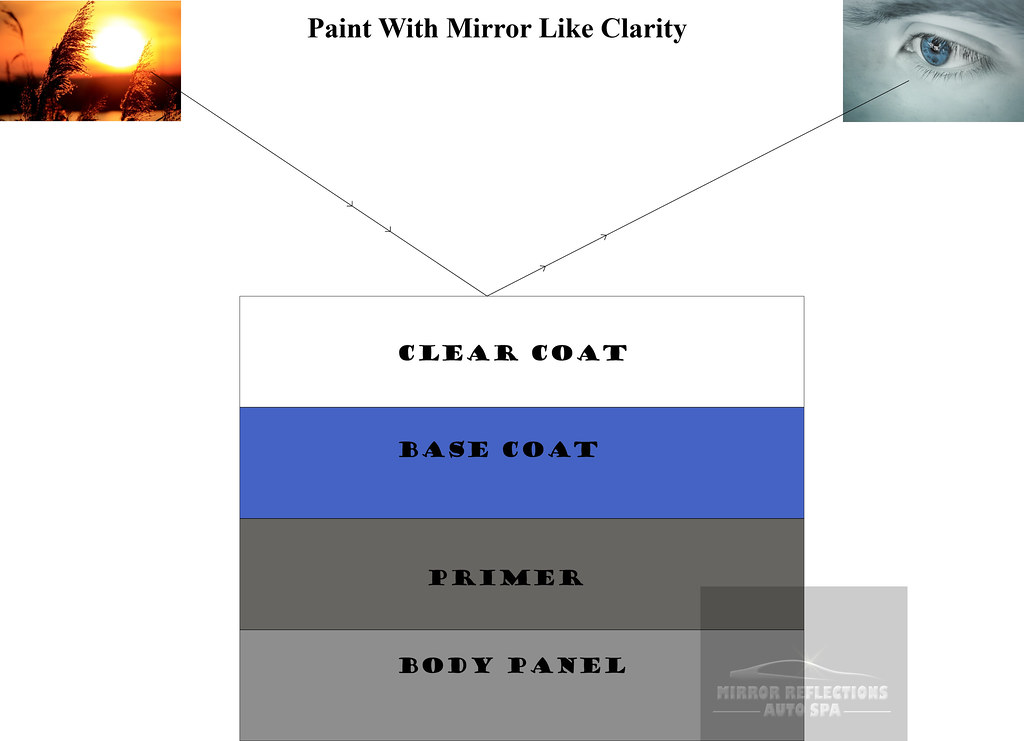
When there is an uneven surface, light waves are scattered at many different angles (diffuse reflection). Consequentially your paint will look dull.

There is not a smooth signal to and from your eyes with a blemish. Now imagine 1,000s of these!
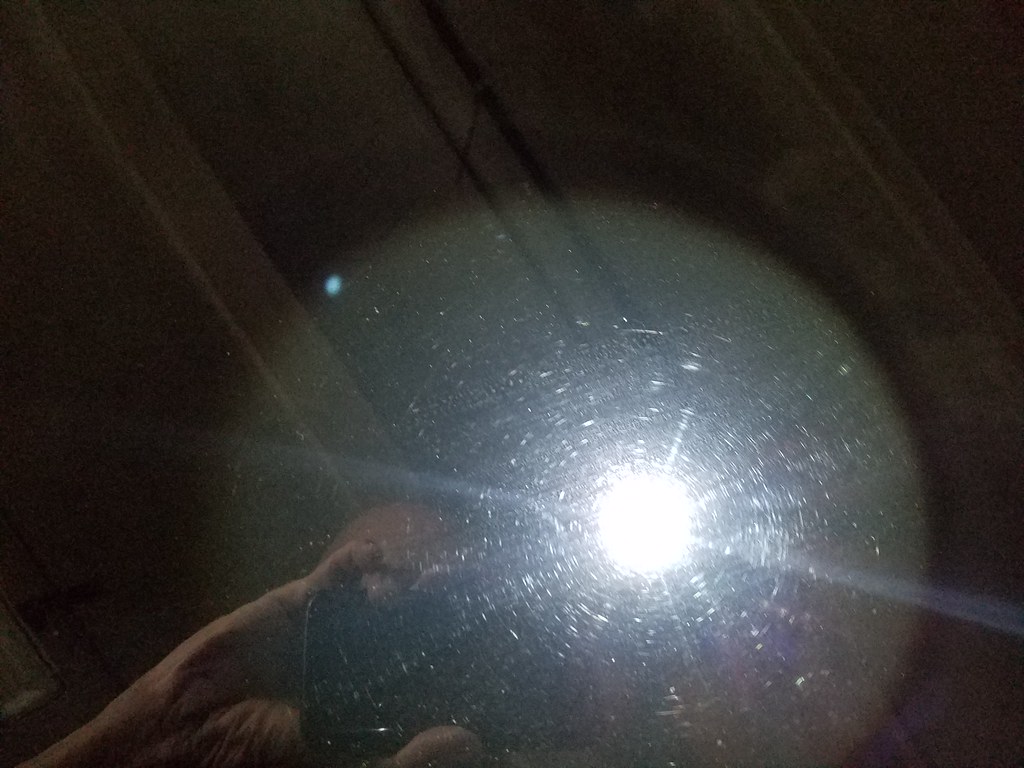
A picture of a Jaguar XK8, prior to a Two Stage Paint Correction.
These are referred to as swirls. Many people make the mistake of thinking they come from a polisher due to an optical illusion created from direct sunlight. But the circular pattern is really thousands of tiny straight line scratches if you look at them closely. Your eyes trick you because of the pattern around direct sunlight is where your eyes are focused. This is why the defects are known as swirls (swirl pattern around intense light). They are primarily the cause of poor wash technique, that includes definitely includes hand washing.
The owner of this Jaguar did not see these swirls, yet he wanted me to “make paint his pop”, and he had yet to find someone who could address the problem. Long story short, fixing the problem, meant paint correction. As obvious as to some what was wrong with his car with the help of a swirl finding light, this is a relatively common issue.
The video of this turnaround can be shown here:
Source: YouTube
Paint Correction is the use of abrasives (primarily polish) to remove defects by leveling the painted surface below the depth of the defects. This, providing a level surface, improves the appearance of your paint. Other terms that have been used to describe what paint correction is are cutting and buffing or buffing out.
Stage 2: Two Polishing Steps
This is the step for most noticeable defect removal.
A typically aggressive (compound) polish paired with and typically aggressive pad choice is used as the first of two steps.
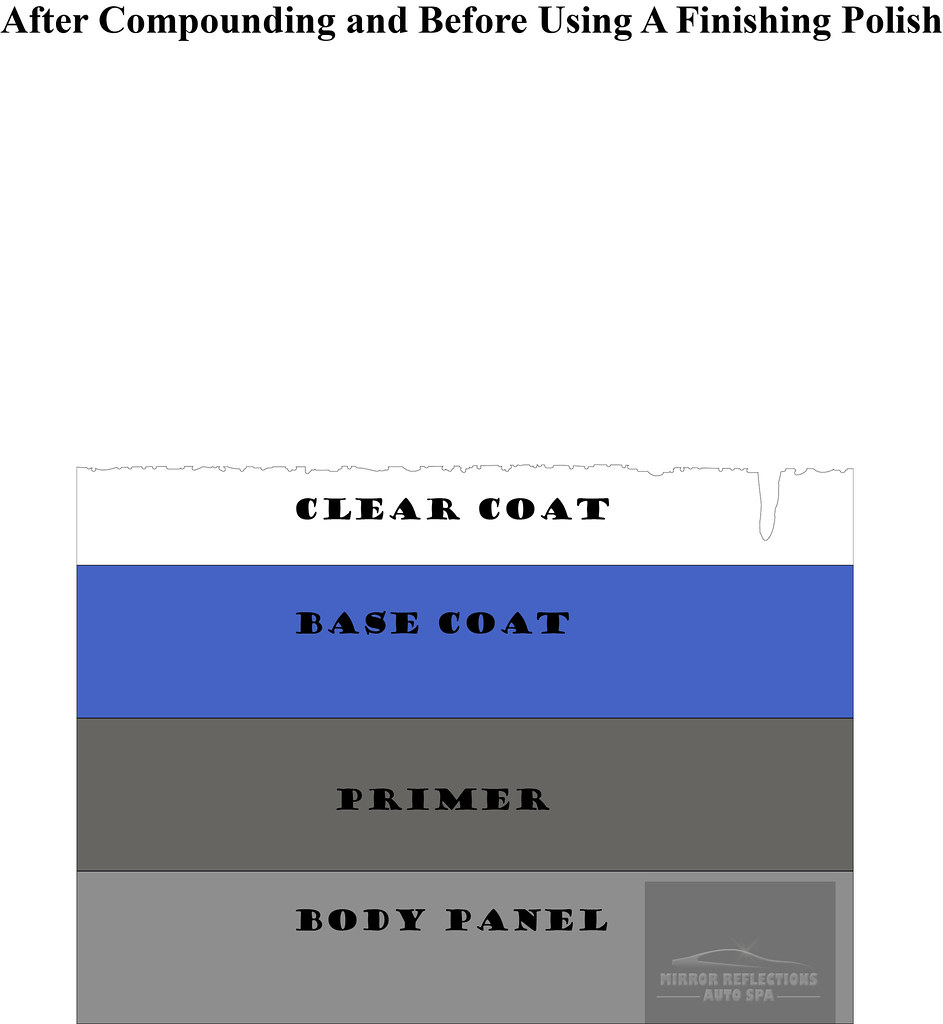
This is followed by a finishing polish with a gentler pad choice that bridges the gap further refining and jeweling for mirror-like clarity.
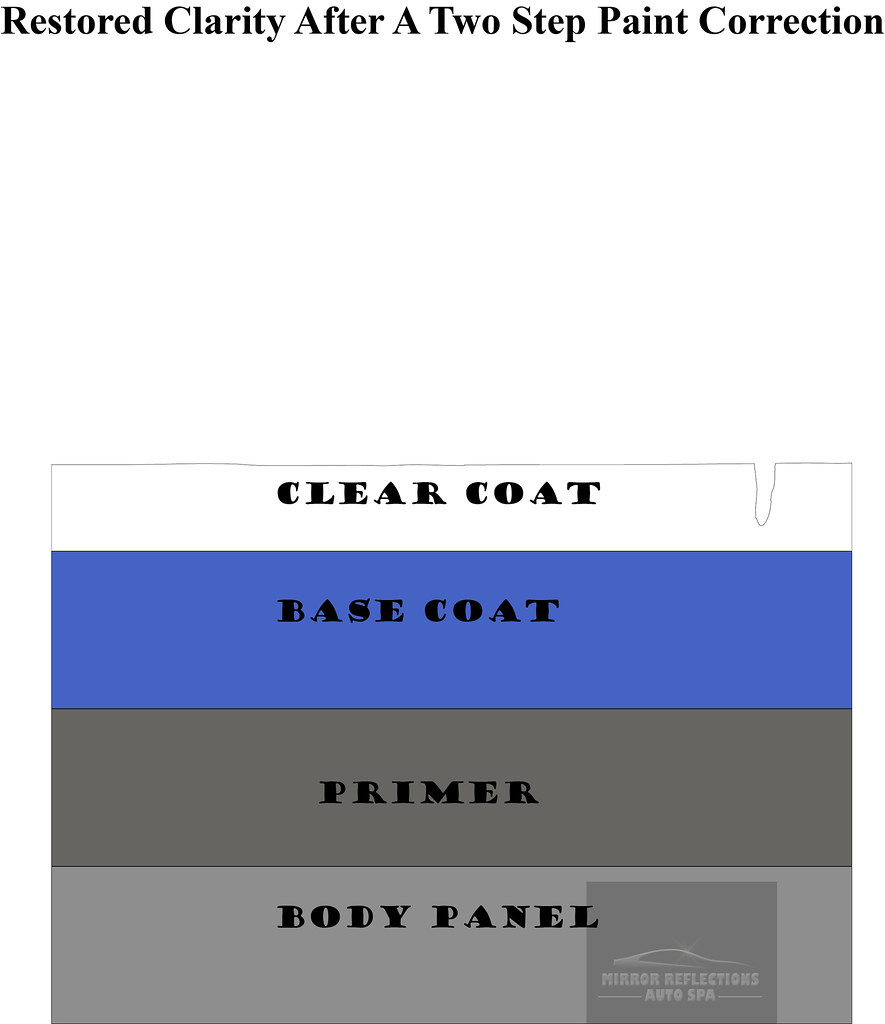
Stage 1: Paint Correction
Although it is the primarily a resource for cleaning and maximizing gloss on weathered paint before applying protection, a slightly more aggressive pad or the use of a less aggressive compound with a medium light pad can produce respectable correction results in just one step.
When a majority of defects are not removed but leveled and rounded off to the point which the visual appearance is noticeably better it is often referred to as an enhancement of the paint.
All In One:
There is also an All In One type polish that can enhance the paint. Though more efficient, there is a certain sacrifice when combining polish and wax in terms of effectiveness.
White cars: even with the base coat color making defects much more difficult to see, an effective polishing session can yield a mirror like gloss even from these cars.
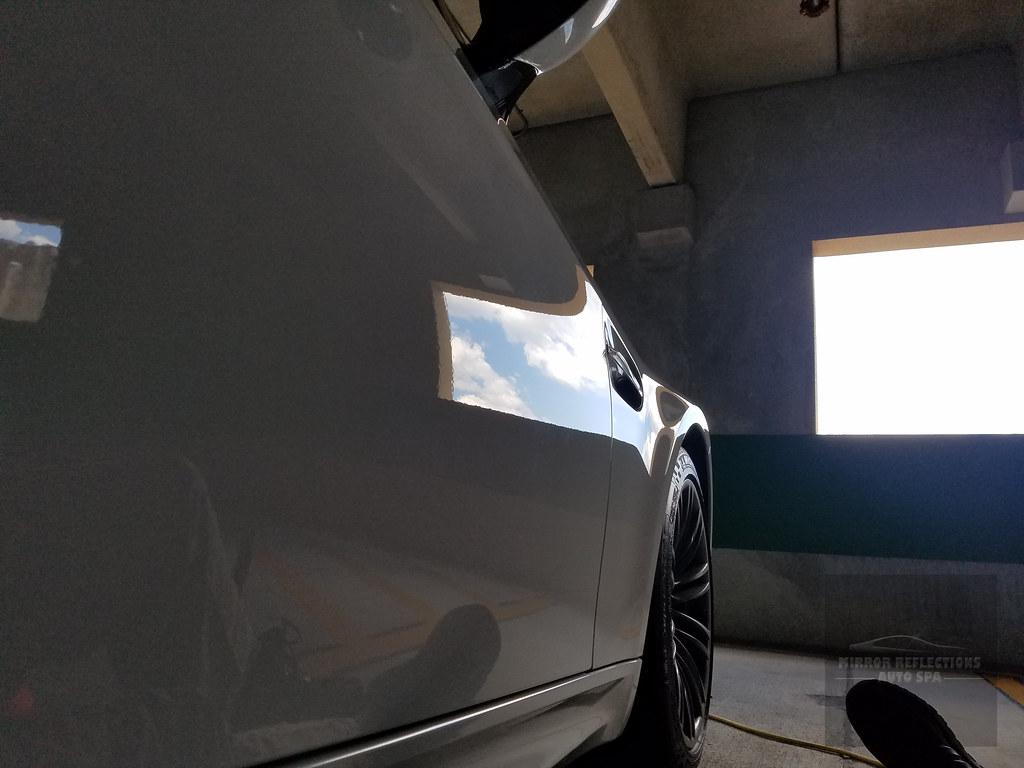
This BMW M3 was polished in a two stage paint correction package. The reward may not be as dramatic as a black car but level paint is still visually more appealing.
Related Posts
- Paint Defects and Paint Correction – Part 3 : The Problem With A Quick Buff
- First Timer Gets Excellent Results in Under 1 Day – 2016 VW GTI Paint Correction & Gyeon CanCoat
- Paint Defects And Paint Correction – Part 4 : Ceramic Coatings
- Detailing Gone Bad: 2003 Toyota Tundra
- Product Review: Rupes Big Foot Mini LHR 75E Deluxe Kit









This is an outstanding article and a must read for people new to paint correction. I’ve enjoyed reading your work since you started writing for Detailed Image. Keep up the good job.
Thank you so much Brian. I feel like this is going to be a significant article series for enthuiasts and professionals.
Thank you for this article. I’ll be referencing this when speaking with customers!
I am happy to here this article making an impact on others.
*hear (my apologies)
This article is spot on. I have a local detail shop in Tampa FL, and i have had the same type of customers who think wax will fix their dull and swirled paint, often times its a head banging job to get the customer to understand what you the detailter is trying to get across…
Good post well said
Thank you! And yes I know the feeling.
Great article, Rodney. I’m going to post it on the forum I belong to.
Hi Rodney,
I really enjoyed your post about automotive paint correction. It is a must read for my customers considering paint correction from now on. You described it perfectly. Clean, concise, and to the point, so a 10 year old can understand the concept. With your permission do you mind if I share your article with my customers?
Sure! That is what I wrote this for; to better help educate the public and support other detailers who are trying to do the same.
Hi Rodney,
Thank you for your blessing.
Bob at Car Protection Pros
You are welcome!
Paint correction is just a technical term that is use to confuse the average person, they think that it some kind of a special process or a procedure that a average person can’t do, really all you doing is buffing out the top layer of clear coat to remove scratches to a mirror shine and then waxing, no difference than a used car verse a pre-owned car or a second hand car, all means the same.
If you have a way of describing a detaiing process that works for you, that is great. There is nothing wrong with that. Also as professionals (myself especially) can we do an even better job of explaining to the average person detailing? Absolutely! That is why I write articles like this.
In reference to my use of the term paint correction and my intentions of educating the average person who is open and interested in learning what that means: A filmaker or a chef has industry standard terminology that the average person may not fully understand. The detailing industry is no different. I would be doing a disservice to the many people who want to learn by not using the technical terms that us professionals use.
Many people also do not understand what goes into a detailing job. There is a lot of misunderstanding with respects to the proper processes of automotive cosmetic care. A lot of that stems from the use of NON industry terms like ‘buff’ and ‘wax job’ interpreted many different ways by different people. That also has lead to a lot of frustration between consumers and professionals in unmatched expectations.